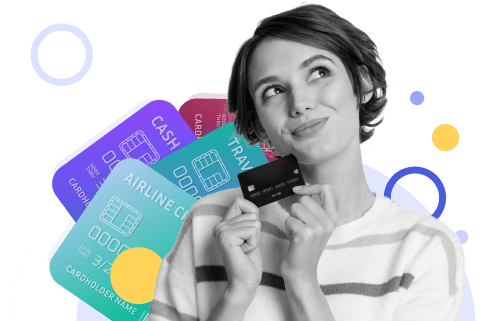Credit Card Calculators
We built these calculators to help you manage your credit cards and maximize your rewards.
How to Find the Right Credit Card
Whether you're looking for your first credit card or your 50th, here's how to choose the best one for you:
Assess your goals: Based on your current financial goals, decide what you're looking for in a card. Focus on meeting your immediate needs, whether it's to build credit, enjoy lower interest rates or earn richer rewards.
Review credit score requirements: Find cards that require credit scores similar to yours. If you're looking at elite credit cards with a less-than-elite credit score, you may be wasting your time.
Compare cards: Build a list of cards that match your goals and accept applications at your credit score. You can use our rankings, reviews and head-to-head comparisons to understand the differences quickly.
Check fees and interest rates: Every fee and interest rate related to the credit cards you are considering can increase the level of debt you're in. When all else is the same, you want cards with lower fees and rates.
Compare rewards and offers: As you review the cards you've gathered, stay focused on your primary goal for this new card. Remember, you want the best card for your goal, not the OK card with a cool sign-up bonus.
Get pre-approved and apply: Many card issuers, including the major issuers like Citi, Chase and American Express, offer pre-approval processes that allow you to find out if you'll be approved using a soft credit check that won't hurt your credit score. Once you're pre-approved, you'll have the opportunity to formally apply or elect not to get the card.
Use responsibly and assess: Once you have your card, use it responsibly. If possible, pay off your entire balance every month to avoid interest charges. As you build your credit and your needs change, assess your cards at least once a year to see if they're still working for you.
About Doug Milnes, CFA

Doug Milnes is a CFA charter holder with over 10 years of experience in corporate finance and the Head of Credit Cards at MoneyGeek. Formerly, he performed valuations for Duff and Phelps and financial planning and analysis for various companies. His analysis has been cited by U.S. News and World Report, The Hill, the Los Angeles Times, The New York Times and many other outlets.
Milnes holds a master’s degree in data science from Northwestern University. He geeks out on helping people feel on top of their credit card use, from managing debt to optimizing rewards.









